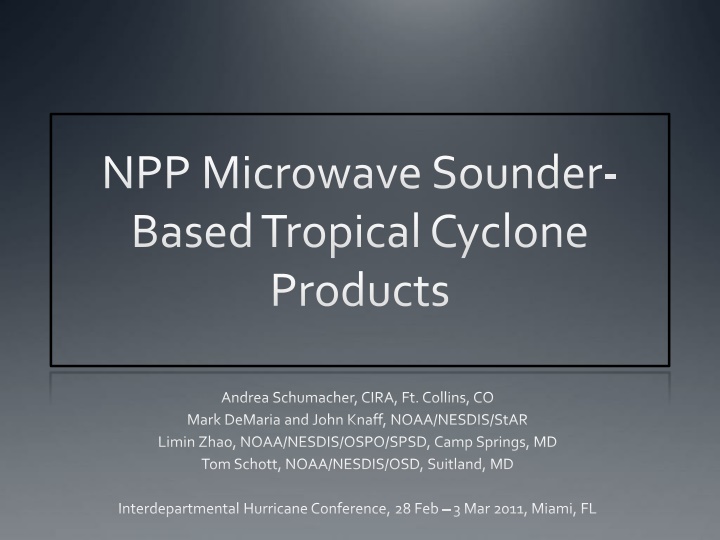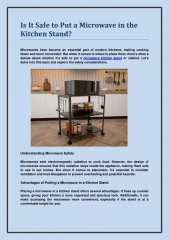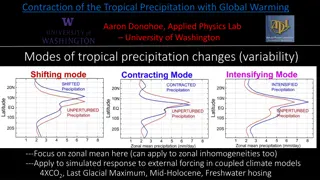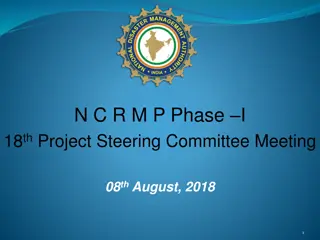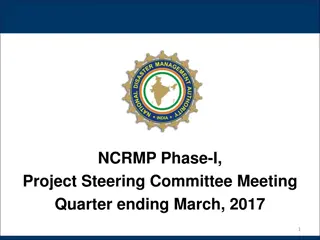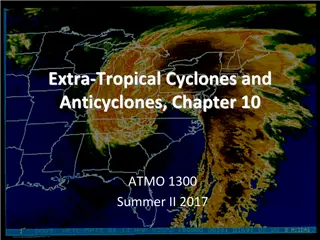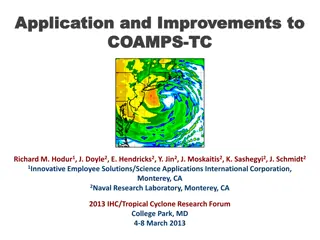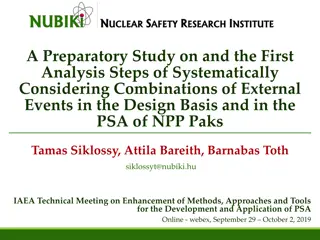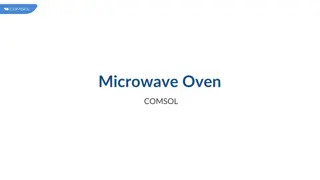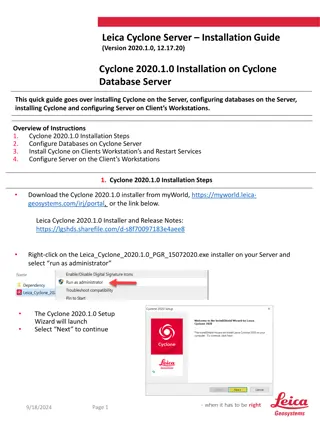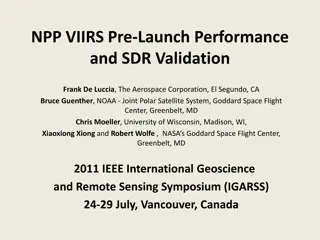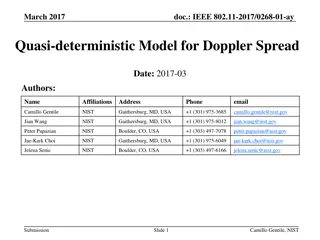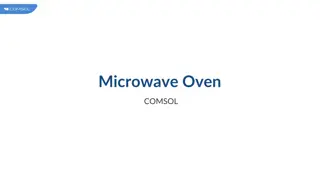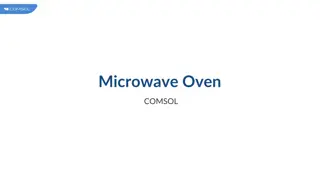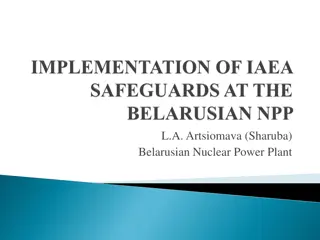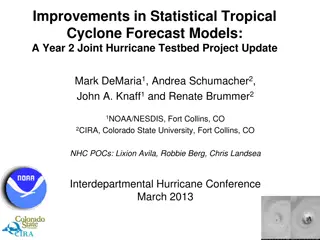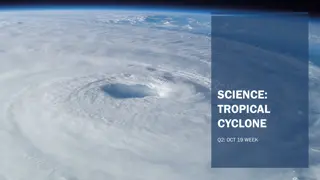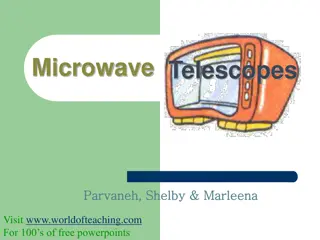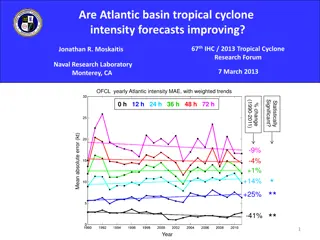NPP Microwave Sounder- Based Tropical Cyclone Products
This paper presented at the Interdepartmental Hurricane Conference in 2011 discusses the development of tropical cyclone products using NPP microwave sounder data. Authors from different NOAA offices share insights on the topic.
Download Presentation

Please find below an Image/Link to download the presentation.
The content on the website is provided AS IS for your information and personal use only. It may not be sold, licensed, or shared on other websites without obtaining consent from the author.If you encounter any issues during the download, it is possible that the publisher has removed the file from their server.
You are allowed to download the files provided on this website for personal or commercial use, subject to the condition that they are used lawfully. All files are the property of their respective owners.
The content on the website is provided AS IS for your information and personal use only. It may not be sold, licensed, or shared on other websites without obtaining consent from the author.
E N D
Presentation Transcript
NPP Microwave Sounder- Based Tropical Cyclone Products Andrea Schumacher, CIRA, Ft. Collins, CO Mark DeMaria and John Knaff, NOAA/NESDIS/StAR LiminZhao, NOAA/NESDIS/OSPO/SPSD, Camp Springs, MD Tom Schott, NOAA/NESDIS/OSD, Suitland, MD Interdepartmental Hurricane Conference, 28 Feb 3 Mar 2011, Miami, FL
Microwave Imagery and Tropical Cyclones Satellite remote sensing important resource for monitoring TCs, especially in data sparse regions Passive microwave remote sensing suited to observing TCs Penetrates beyond the top layer of cloud (use in CDO) Less sensitive to hydrometeor contamination Available day or night Has been used for decades Microwave Sounding Unit (MSU) 1978 1998, ~2.5 degree latitude footprint Advanced Microwave Sounding Unit (AMSU) 1998 present, ~50km footprint NOAA-15/16/17/19, Aqua, Metop
AMSU TC Products CIMSS Uses MLR scheme to estimate MSLP and MSW using 3 channels AMSU-A, 1 channel AMSU-B Correction made to MSLP using eye size from ADT or ATCF CIRA Uses AMSU temperature retrieval, hydrostatic and gradient balance to solve for T(r,z) and V(r,z), and then applies statistical MLR scheme to solve for Intensity (MSW and MSLP) Wind radii (r34, r50, r64) 3D horizontal winds (non-linear balance) CIMSS and CIRA intensity estimates inputs to SATCON CIRA AMSU TC product input to Multi-platform TC Surface Wind Analysis
AMSU TC Products (cont) Intensity Estimates (red line NHC) Hurricane Igor 17 Sep 2010, 12z AMSU non-linear balance winds at 850 hPa Multi-platform TC surface wind analysis
Motivation These products all rely on AMSU, which has limited lifetime Next generation: Advanced Technology Microwave Sounder (ATMS) NPOESS Preparatory Project (NPP) Satellite launch planned for Oct 25, 2011 35% smaller footprint than AMSU (~33km) Improved spatial coverage (no gaps between swaths) MIRS processing temperature retrievals Preparation for Joint Polar Satellite System (JPSS) Goal: Adapt CIRA AMSU-based TC products to use ATMS Continuity of guidance products Make use of enhanced capabilities
Overview of CIRA AMSU-based TC products - AMSU Data AMSU cross-track swath ~ 2200km 2200 km To use swath for this algorithm, TC must be within 600 km of swath center Resolution ranges from ~ 48 to 80 km from center to 600 km Too course for direct intensity estimates (sub-sampling near core) CIRA uses MLR bias correction UW-CIMSS correction based on core size 1200 km
Azimuthal Mean Radial-Height Cross Sections Corrected, normalized T at 23 pressure levels interpolated to radial grid (r 600km), azimuthally averaged Hydrostatic Integration, T(r,z) and p(r,z) Assume gradient balance, solve for V(r,z) Boundary conditions from NCEP analyses MSW from azimuthal mean V tend to be weaker than observed due to Course resolution of AMSU Smoothing of data Sample r/z tangential wind cross-section from AMSU retrieval Operational since 2003
Intensity and Structure Estimates Statistical prediction scheme Dependent variables: MSW, MSLP, and azimuthal average r34, r50, r64 Best track data Tested 19 potential predictors (18 AMSU-based) MLR (backward stepping) Fit parametric wind model to r34, r50, r64 and storm speed to get asymmetric radii Intensity estimates: MAE of 11 kt / 7 hPa Structure estimates: MAE of 30 nmi / 24 nmi / 14 nmi for r34 / r50 / r64 See Demuth et al. 2004 and 2006 Operational since 2003
Area Average Wind Shear and Mean Layer Winds Solve non-linear balance equations at standard pressure levels to get 3D winds Bessho et al. 2006, Zehr et al. 2008 Use average wind over TC-centered 600-km radius to calculate Vertical shear 850-200 hPa and 850-500 hPa Mass-weighted deep layer mean wind 850-200 hPa and 850-500 hPa Correlates well with NCEP VWS Provide timely, independent estimates Operational at NCEP since 2005 2004-2007 Atlantic cases From Zehr et al. 2008
Multi-Platform TC Surface Wind Analysis
Product Update Plan Use existing methodology, new dataset ATMS data 22-channel passive microwave radiometer (AMSU-A/B) 35% smaller footprint than AMSU Improved spatial coverage (no gaps between swaths) Anticipated advantages Generalizing current algorithms to use ATMS data ensures continuity of microwave-based TC products used by TC agencies Enhanced resolution and coverage may improve accuracy of TC products MIRS processed temperature retrievals
Project Update Plan (cont) MIRS Temperature Retrievals Microwave Integrated Retrieval System (MIRS) Upgrade to the MSPPS (Microwave Surface and Precipitation Products System) Based on an assimilation-type scheme (1DVAR) capable of optimally retrieving atmospheric and surface state parameters simultaneously Anticipated advantages Eliminates duplication of effort (start with temperature retrievals) Improves product reliability Impacts on accuracy? Impacts of using MIRS retrievals vs. Goldman/Barnett statistical temperature retrievals on TC products subject of current CIRA Cal/Val project
Timeline for Updates May 2011: Development begins Oct 2011: NPP satellite launch Oct 2011 Jan 2013: Collect MIRS processed temperature retrievals Jan 2013 Mar 2013: Develop final product algorithms (same methodology, new data) Mar 2013 Jul 2013: Pre-operational testing Aug 2013: NPP microwave sounder-based TC products declared operational
References Bessho, K., M. DeMaria, J.A. Knaff, 2006: Tropical Cyclone Wind Retrievals from the Advanced Microwave Sounder Unit (AMSU): Application to Surface Wind Analysis. J. of Applied Meteorology. 45, 399 - 415. Demuth, J., M. DeMaria, and J.A. Knaff, 2006: Improvement of Advanced Microwave Sounding Unit Tropical Cyclone Intensity and Size Estimation Algorithms, Journal of Applied Meteorology and Climatology, 45, 1573-1581. Demuth, J. M. DeMaria, J.A. Knaff and T. H. Vonder Haar, 2004: Validation of an advanced microwave sounder unit (AMSU) tropical cyclone intensity and size estimation algorithm, J. App. Met., 43, 282- 296. Zehr, R., J. Knaff and M. DeMaria, 2008: Tropical Cyclone Environmental Vertical Wind Shear Analysis Using a Microwave Sounder. Conference on Hurricanes and Tropical Meteorology, 2008.
